
Abutilon is a large genus of flowering plants in the mallow family, Malvaceae. It is distributed throughout the tropics and subtropics of the Americas, Africa, Asia, and Australia. General common names include Indian mallow and velvetleaf; ornamental varieties may be known as room maple, parlor maple, or flowering maple. The genus name is an 18th-century New Latin word that came from the Arabic ’abū-ṭīlūn, the name given by Avicenna to this or a similar genus.

Schlumbergera is a small genus of cacti with six to nine species found in the coastal mountains of south-eastern Brazil. These plants grow on trees or rocks in habitats that are generally shady with high humidity, and can be quite different in appearance from their desert-dwelling cousins. Most species of Schlumbergera have stems which resemble leaf-like pads joined one to the other and flowers which appear from areoles at the joints and tips of the stems. Two species have cylindrical stems more similar to other cacti.

Cynanchum is a genus of about 300 species including some swallowworts, belonging to the family Apocynaceae. The taxon name comes from Greek kynos and anchein, hence the common name for several species is dog-strangling vine. Most species are non-succulent climbers or twiners. There is some evidence of toxicity.

Rauvolfia is a genus of evergreen trees and shrubs, commonly known as devil peppers, in the family Apocynaceae. The genus is named to honor Leonhard Rauwolf. The genus can mainly be found in tropical regions of Africa, Asia, Latin America, and various oceanic islands.
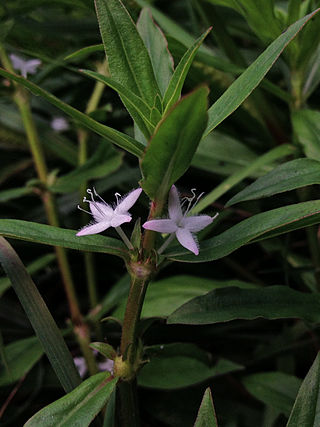
Diodia is a genus of flowering plants in the family Rubiaceae. It was described by Carl Linnaeus in 1753. The genus is found from southern and eastern United States, South America, Central America, Mexico, the West Indies and tropical Africa.

Selenicereus, sometimes known as moonlight cactus, is a genus of epiphytic, lithophytic, and terrestrial cacti, found in Mexico, Central America, the Caribbean and northern South America. The term night-blooming cereus is also sometimes used, but this is also used for many night-blooming cacti, including Epiphyllum and Peniocereus. In 2017, the genus Hylocereus was brought into synonymy with Selenicereus. A number of species of Selenicereus produce fruit that is eaten. The fruit, known as pitaya or pitahaya in Spanish or as dragon fruit, may be collected from the wild or the plants may be cultivated.

Ladenbergia is a genus of plant in the family Rubiaceae.
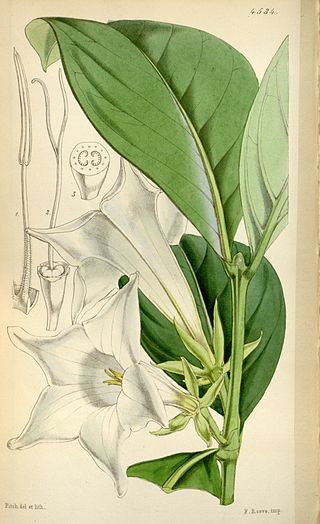
Portlandia platantha, synonym Portlandia albiflora, is a species of plant in the family Rubiaceae. It is endemic to Jamaica.
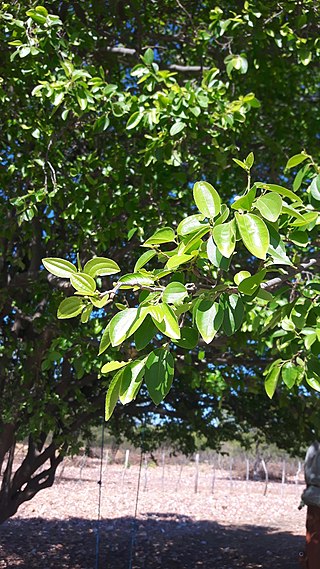
Sarcomphalus is a genus of plants in the family Rhamnaceae.
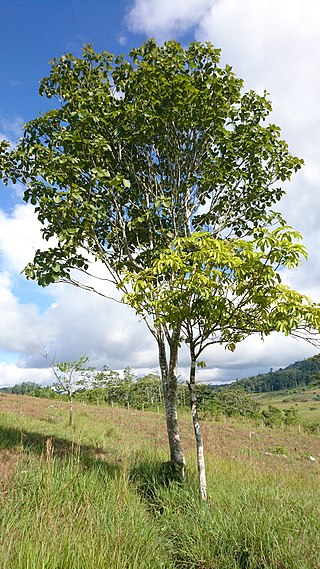
Simira is a genus of plants in the family Rubiaceae. It contains the following species:

Parsonsia is a genus of woody vines in the family Apocynaceae. Species occur throughout Indomalaya, Australasia and Melanesia.

Helicteres is a genus of flowering plants in the family Malvaceae. Its range is from tropical and sub-tropical Asia through to northern Australia, and also Mexico through to the northern half of South America.
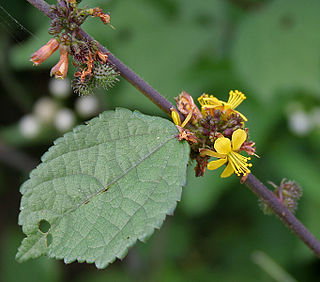
Triumfetta is a genus of plants in the family Malvaceae. Burbark is a common name for plants in this genus.

Cubanola domingensis, or campanita, are small trees endemic to the Dominican Republic.

Chiococceae is a tribe of flowering plants in the family Rubiaceae and contains about 233 species in 27 genera. Most representatives occur from southern Florida to tropical and subtropical America, except for the genera Badusa and Bikkia, which are found from the Philippines to the West Pacific, and Morierina and Thiollierea, which are native to New Caledonia.

Hermannia is a genus of flowering plants in the mallow family, Malvaceae. It comprises at least 65 species with many more species as yet unresolved.

Coutarea is a genus of flowering plants in the family Rubiaceae. The genus is native to southern Mexico, Central America, South America and the West Indies.

Mitracarpus is a plant genus in the coffee family Rubiaceae. Girdlepod is a common name for some species in this genus.

















